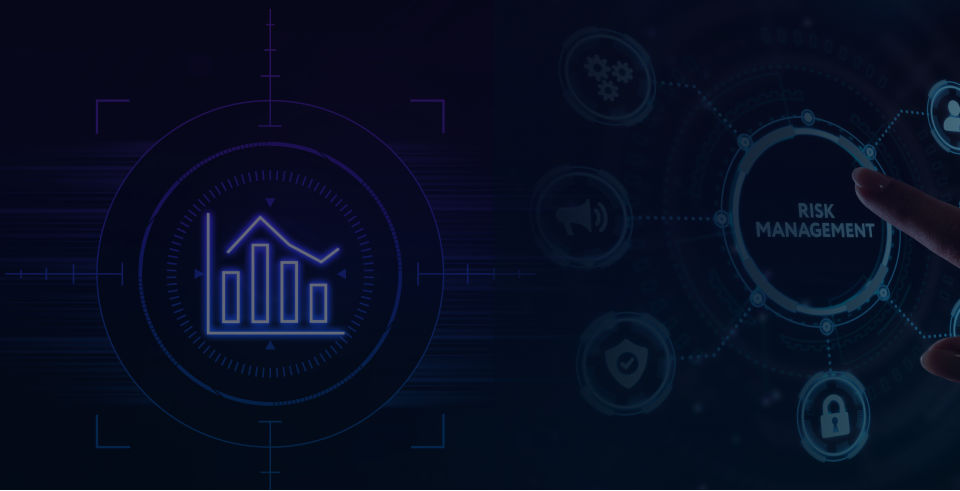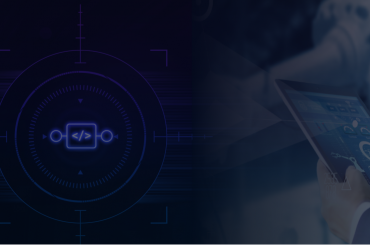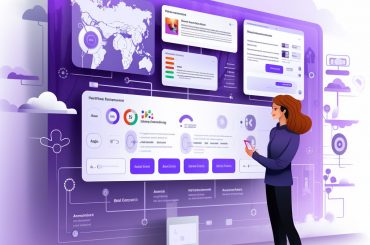Table of Contents
With the adoption of your company’s digital transformation strategy, you are depending more on cloud service providers (CSPs). The business risk management program becomes more difficult as more vendors have access to your data. It’s not even necessary for the compromised vendor to be a company you do business with. The initial step to defending yourself and your clients can be to comprehend information risk management and how to reduce these dangers. But this blog will help you understand IT risk management so it is a careful read.
What Is IT Risk Management?
IT risk management, also called “information security risk management,” consists of the IT risk management policy, procedures, and technologies that a company uses to mitigate threats from malicious actors and reduce information technology vulnerabilities that negatively impact data confidentiality, integrity, and availability.
What Is The Goal Or Objective Of An IT Risk Management Plan?
This business process should be used throughout the whole project, with risks being reviewed regularly to keep mitigation techniques current. Events that might have an impact on the project and steps the team could take to reduce risk should be regularly evaluated.
This risk management strategy aims to maintain constant progress and compliance with shifting internal and external limitations. It can be thought of as a continuous improvement process.
What Are IT Risk Management Frameworks?
Companies utilize the IT risk management framework as a framework and a guide to recognize, remove, and reduce risks. It was initially created by the National Institute of Standards and Technology to aid in protecting the American government’s information networks.
Although the RMF was initially intended for use by federal agencies, businesses in the private sector can simply adopt it. Businesses cannot operate if they do not expose themselves to risks including IT issues, lawsuits, and financial loss. Even while it is hard to eliminate all risks associated with operating a business, they can be reduced.
What Are The Five Steps Of The IT Risk Management Lifecycle?
Referring to risk management as the risk lifecycle emphasizes the necessity for project managers to:
-
Identifying risks
Once the project begins, it is critical to:
Describe the many risks that the project may encounter when it is being carried out.
Define them in light of the environment the project will be carried out. This entails extensive ideation, graphical analysis, and project history research.
-
Assessing The Risks
Conducting a risk assessment is the next stage after listing the risks has been completed. The objective is to evaluate the risk level, which entails categorizing risks using both quantitative and qualitative standards. This ought to enable you to classify risks (high, moderate, or low) based on their potential influence on scope, delays, or costs.
-
Controlling Defined Risk Management
Risk reduction is based on control measures and thorough reaction preparation.
Based on the sorted list of hazards created during the preceding phases, determine the appropriate risk response. Take into account their level of importance and urgency; some may require urgent attention, but others may be resolved in the medium or long term.
-
Preventing Risks
Create a procedure for tracking and keeping an eye on hazards as the project develops. This makes sure that new hazards are continually detected and managed. The risk register should be updated often for successful risk management, and the risk monitoring phase should continue even after the project is complete.
-
Reporting Results
Make sure to document your tracking and save your analysis as a project manager so that others can access the past. This enables you to learn from your experience and apply it to future initiatives. For stakeholders and your firm as a whole, accurate reporting is crucial.
The Best IT Risk Management Practices
Examine the following three best practices for running your company’s IT risk management program:
-
Observe Your IT Environment
Your firm can identify flaws and prioritize remedial tasks by closely monitoring its IT infrastructure.
One of many IT risk management examples, many organizations struggle with cloud resource configuration. “AWS S3” buckets are commonly mentioned in news reports. These public cloud storage places are not inherently dangerous, but if they are improperly configured, the public, including attackers, can access them. To improve information security, it is possible to find malfunctioning databases and storage sites by constantly monitoring your IT environment.
-
Keep An Eye On Your Supplier Chain
Your IT risk management approach must include third-party vendor risk reduction as well. Although you have authority over your vendors, it’s possible that you won’t be able to enforce the same legal requirements upon their vendors. You require transparency into the cybersecurity posture throughout your ecosystem as part of your comprehensive information risk management plan.
Your information is in danger, for instance, if the vendor of your supplier employs a cloud database and keeps data in plain text. The cyber health of your ecosystem can be seen by continuously checking the supply streams for encryption, a method of rendering data unintelligible even if an attacker gains access to it.
-
Track Compliance
Legislative governments and industry standards groups have issued stricter compliance rules as data breaches garner more news coverage. A compliance cybersecurity program must include ongoing monitoring as it is mandated by several new legislations, including the General Data Protection Regulation (GDPR), the California Consumer Privacy Act (CCPA), and the New York Stop Hacks and Improve Electronic Data Security (NY SHIELD Act).
You must monitor and record your operations to give internal and external auditors confidence that your IT risk management program is compliant. You must prioritize corrective measures as you regularly monitor your company’s IT ecosystem and record your progress to show your auditors that governance is in place.
Conclusion – Managing risks at various stages of a project’s life
Understanding the procedures involved in the IT risk management lifecycle is very helpful. Risk management ought to be flexible, responsive, and ongoing. It complements other crucial facets of the project, including:
- Strengthen the project team by ensuring that everyone has the necessary abilities and those team members are placed with peers who complement their strengths.
- Regularly review risks to modify your risk control strategy,
- Maintain the documentation current for the sake of transparency and to disseminate the information you’ve learned from your experience.
You should be able to navigate the currents and succeed if you keep these last suggestions in mind as well as the steps of the IT risk management process.





